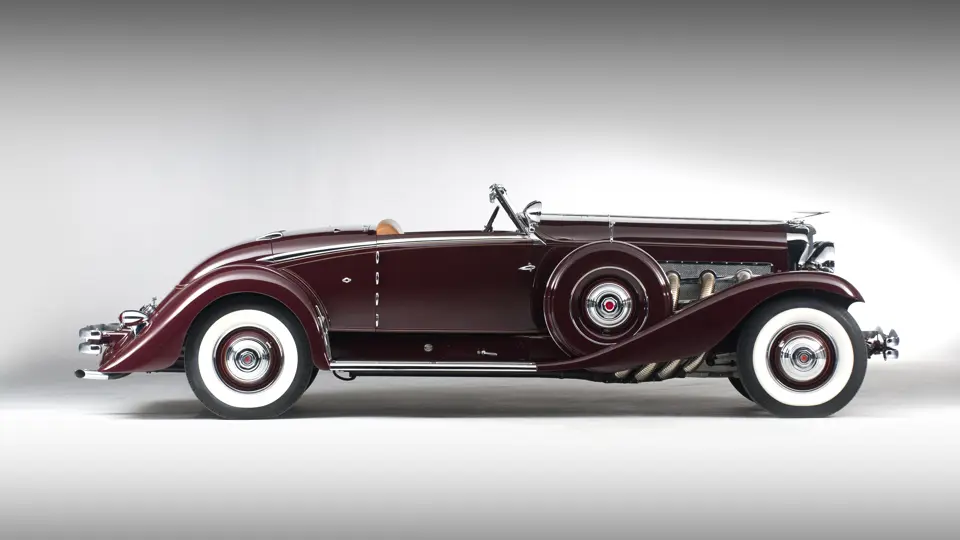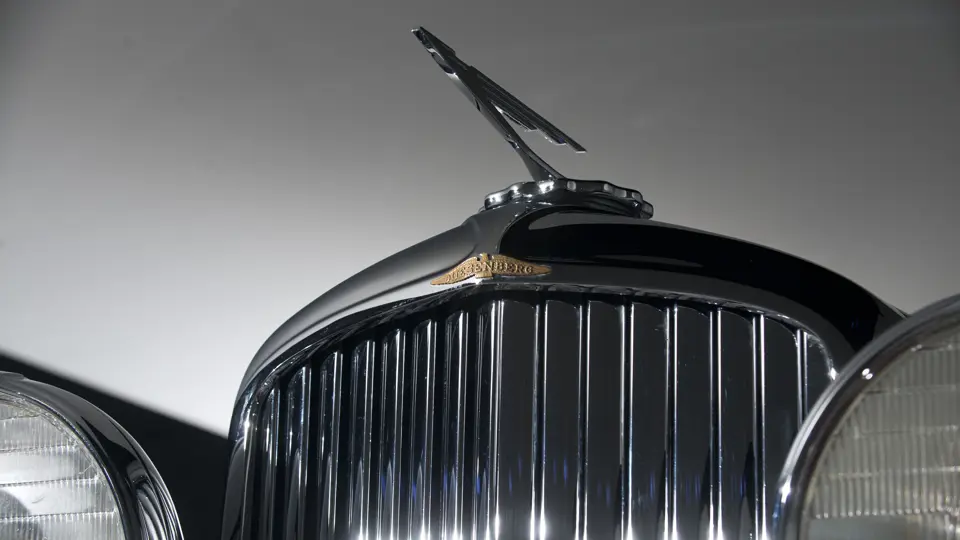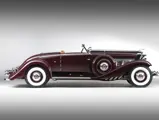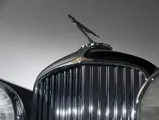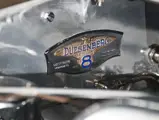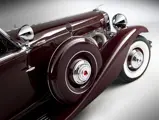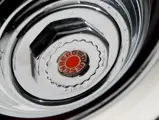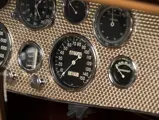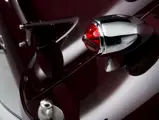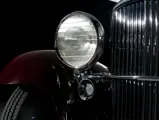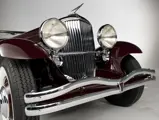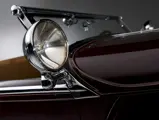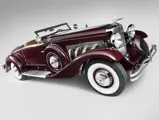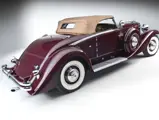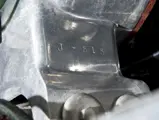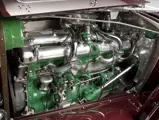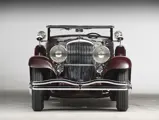
1935 Duesenberg Model SJ Convertible Coupe by Walker-LaGrande
{{lr.item.text}}
$4,510,000 USD | Sold
{{bidding.lot.reserveStatusFormatted}}
- Arguably the most beautiful convertible coupe on the Duesenberg chassis
- One of three produced, and the only supercharged example
- Believed equipped with an original supercharger
- Formerly the property of Raymond Lutgert and General William Lyon
- Driven extensively, including the Texas and Wyoming Duesenberg Tours
320 bhp, 420 cu. in. DOHC inline eight-cylinder engine with centrifugal supercharger, three-speed manual transmission, beam type front and live rear axles with semi-elliptic leaf springs, and vacuum-assisted four-wheel hydraulic drum brakes. Wheelbase: 142.5 in.
As advanced as the Model J Duesenberg was upon its introduction in 1929, most of the technical advancements contained within were confined to the body and chassis. The design of the front end and fenders, as well as that of most coachbuilt bodies, still bowed toward late-1920s convention, albeit stylishly. As a result, by the mid-1930s, the Duesenberg still held mechanical prowess over virtually everything else on the road. From a design standpoint, however, it was looking rather dated.
J. Herbert Newport, who had succeeded Gordon Buehrig as Duesenberg’s body designer, set out to do something about that. Among his creations for the Model J was a new convertible coupe, which incorporated the best of the Duesenberg’s trademark styling cues with the curves of modern streamlining. The traditional upright radiator shell and headlights were now accompanied by deeply skirted and rounded fenders, designed by Alex Tremulis and added at the factory branch, over 17-inch wheels. The beltline began as a slender molding running alongside the hood, and as it reached the windshield, it expanded out along the sides of the body into a polished “sweep,” which then fell back along the long fender like a trailing comet.
The design’s most innovative feature, however, was its convertible top. Most ragtops of the period were clumsy and challenging, requiring a small gang to operate properly. Newport’s convertible coupe incorporated a “semi-automatic” top, based on one previously created for a Rollston-bodied Duesenberg convertible victoria. The owner would unbuckle the top from the windshield frame, and then slip a hand crank into a chromed socket on the side of the body. With a few turns of the crank, the top would fold to the rear of the car and out of sight under its flush-fitting metal lid, producing an open two-passenger car whose lithe, flowing lines made it the Duesenberg equivalent of the Mercedes Special Roadsters of the era.
Production of this body style was handled by the A.H. Walker Body Company, of Indianapolis, one of several firms that produced bodies for Duesenberg under the classy pseudonym of “LaGrande.” With Duesenberg’s days waning and the Great Depression still largely at its zenith, Walker built only a mere three examples of the Newport-designed convertible coupe.
Of the three cars, 2563/J-530 was the only example built with a factory-supercharged engine—the powerplant today famously referred to by enthusiasts as “SJ.” The engine bore a centrifugal supercharger, which was constantly engaged, and produced whizz that is music to the ear of the Duesenberg enthusiast, as well as an additional 60 horsepower. That made the final brake horsepower rating of an SJ Duesenberg something near 320 horsepower, allowing it to get ever-closer to a top speed of 140 miles per hour, over 20 miles an hour faster than a naturally-aspirated example.
Perhaps it was that added performance that prompted Chicago banker John Nichols to trade in his earlier Duesenberg Murphy Convertible Coupe, 2475/J-405, for this car. Nichols chose to part with his second Duesenberg only two years later, trading it in at South Shore Buick of Chicago in February 1937, with 50,899 miles showing. The car then passed to a Packard dealership in Evanston, Illinois, and for well over a decade, it would remain largely within the Chicago area, including time spent in the care of legendary used Duesenberg purveyor John Troka. In 1940, it was involved in an accident, which resulted in the frame being replaced with the current unit, 2405. At some point, the car’s original bell-housing, J-530, was replaced with J-515, thus renumbering the engine; importantly, the original engine does still remain in the car today.
In 1957, the Duesenberg showed up on the opposite coast of the United States, incongruously parked on a used car lot in “Glitter Gulch,” Hollywood, California. Early enthusiast Thomas Magee, of nearby Inglewood, spotted the car and picked it up for $1,500, and he then took it home and began its restoration. As so often happens with restorations, life intervened, and Magee sold the car and another Duesenberg to his good friend and fellow collector, Nathan Derus.
Derus retained ownership of the Duesenberg until 1970, at which point it was at long last restored to its original beauty by Harold Orchard, at the time one of California’s premiere restorers, noted for the outstanding quality of his work. Following the restoration, the car was pictured prominently in Volume 10, Number 2, of Automobile Quarterly. Crucially, when Derus sold the car, it was accompanied by an original supercharger, which is believed to be the unit installed on the car today.
The car changed hands among enthusiasts for the next decade, including ownership by the noted Raymond Lutgert, Axel Wars, and finally, for many years, General William Lyon. It was then acquired by the consignor from General Lyon to become part of another one of the United States’ great collections.
Steve Babinsky’s Automotive Restorations, of Lebanon, New Jersey, one of the most respected Duesenberg restoration facilities in the United States, performed a fresh restoration soon thereafter, and the car still presents outstandingly today. Shown at the 1998 Pebble Beach Concours d’Elegance, it was honored with a First in Class, as well as the Gwenn Graham Award for Most Elegant Convertible. No mere pretty face, it has seen enthusiastic road use, including completing the highly regarded Duesenberg Tours in Wyoming and Texas. Carefully maintained within the owner’s private museum, it has remained in top running order, befitting its elite heritage, and according to the owner, it has always been reliable, never requiring any real sorting.
Audacious in both appearance and performance, 2405/J-530 represents the final evolution of the Duesenberg, combining spectacular modern styling with the rip-roaring power of the ultimate supercharged engine.
Please note that the bell-housing change attributed to Nathan Derus was actually performed earlier in the car’s life.
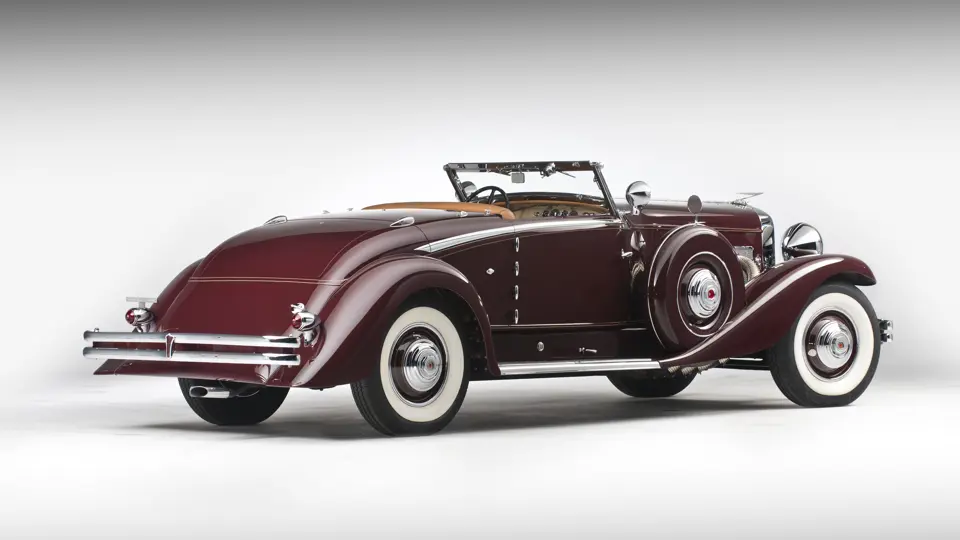




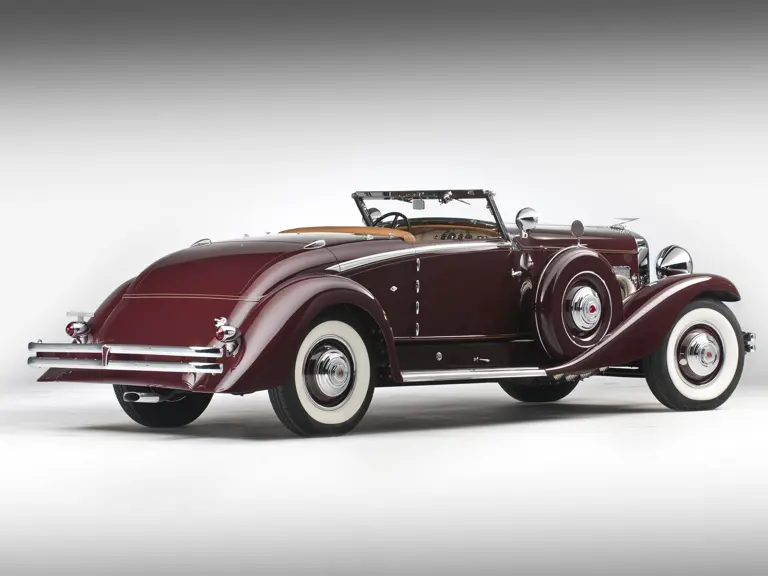
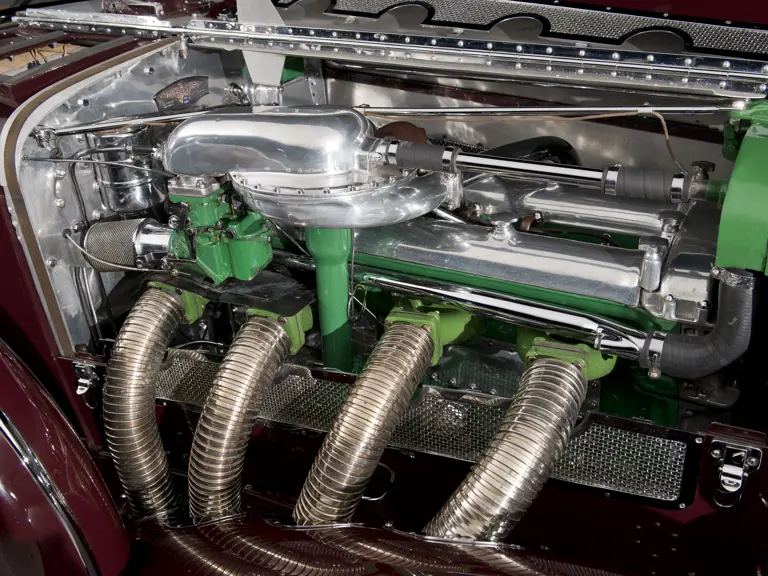
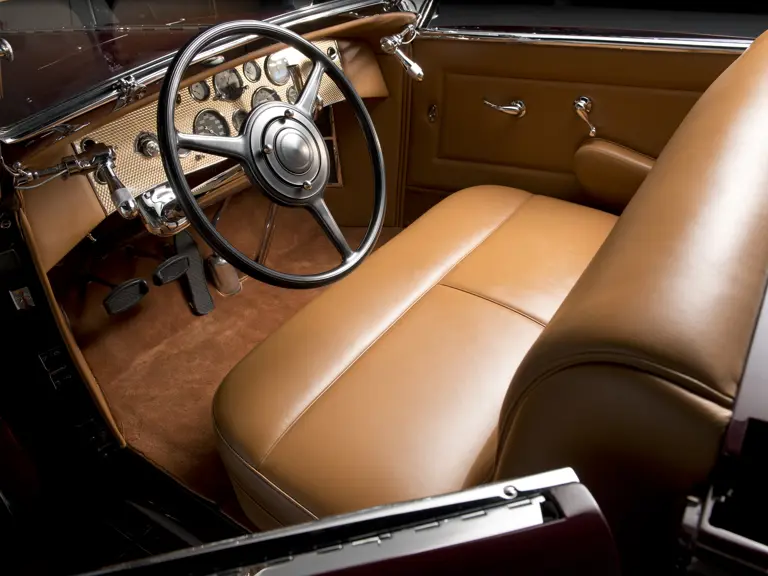
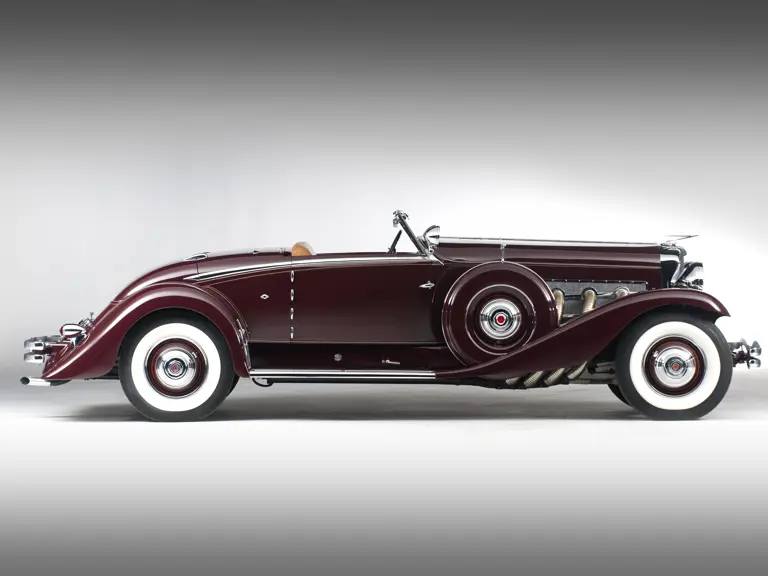
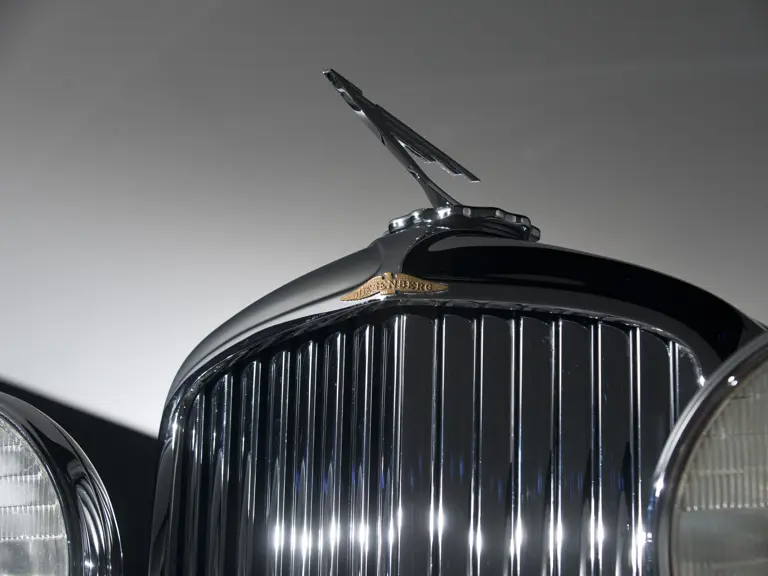
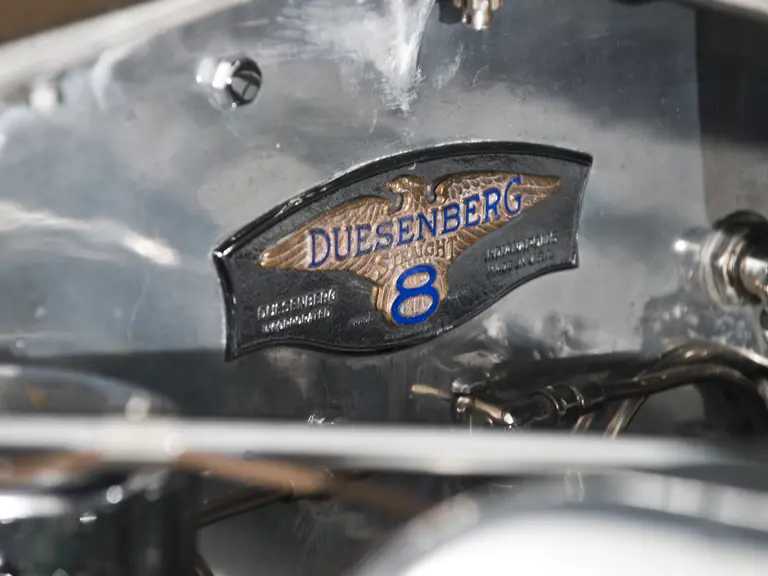
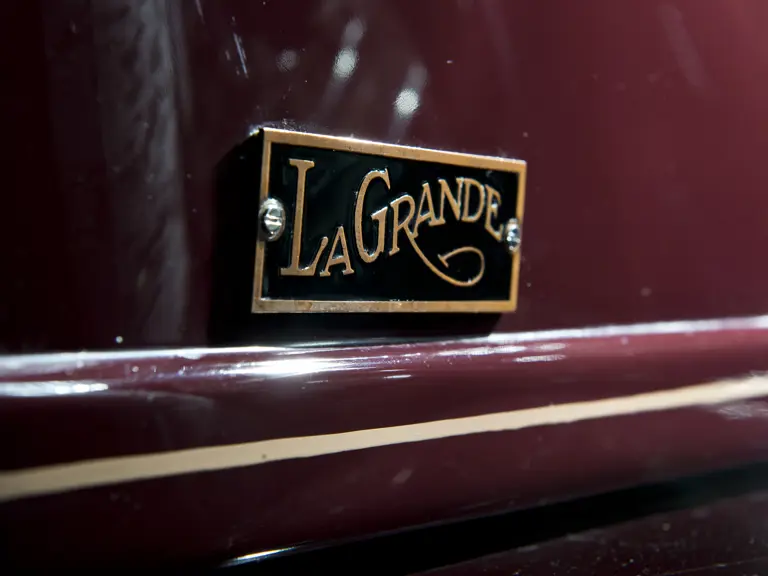

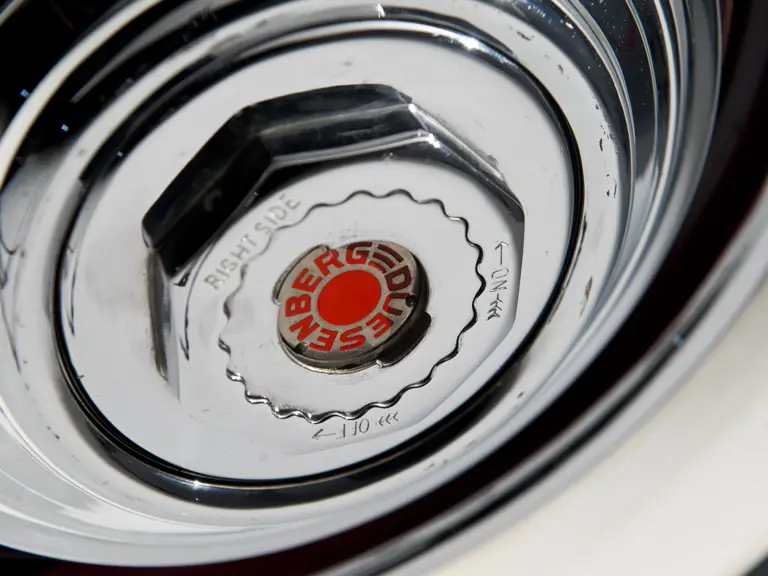
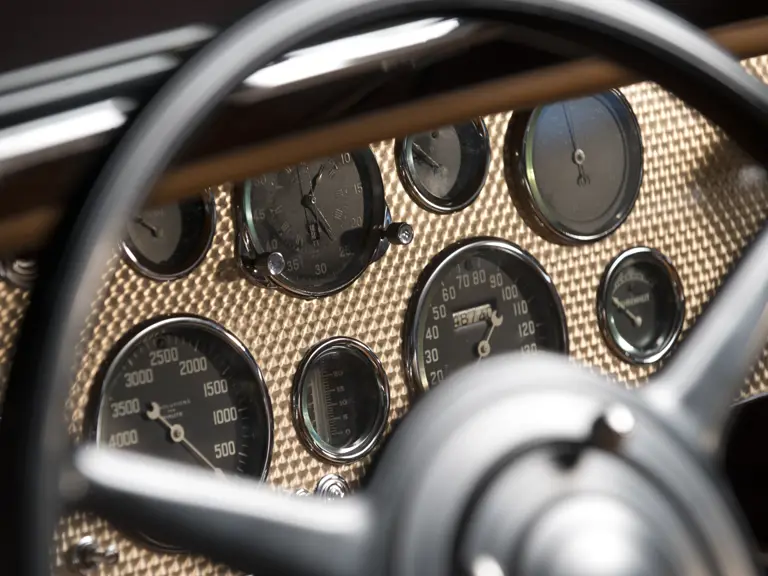
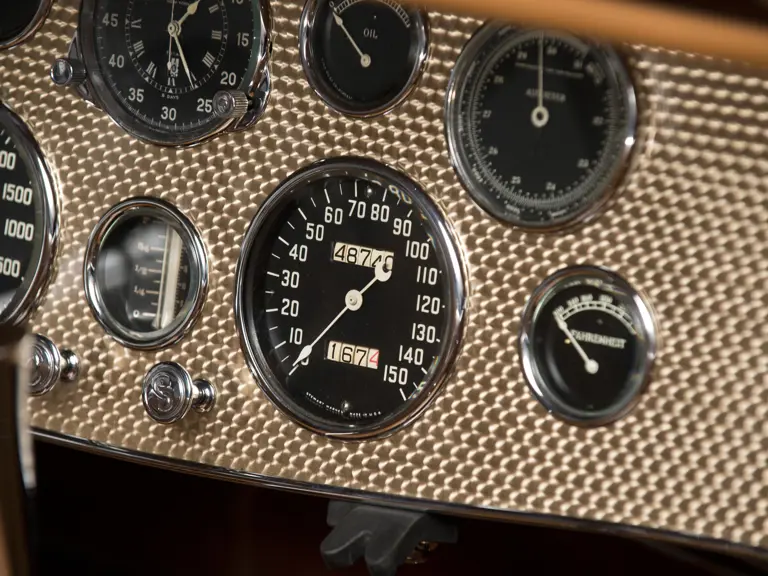


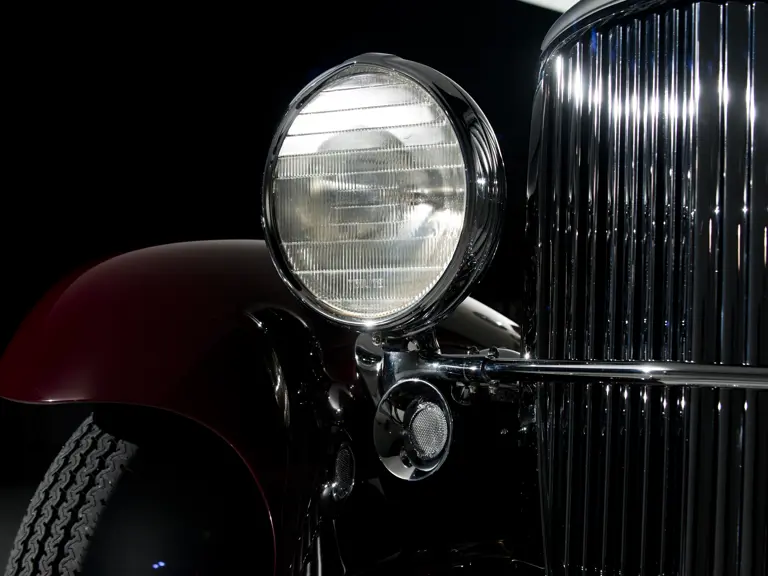
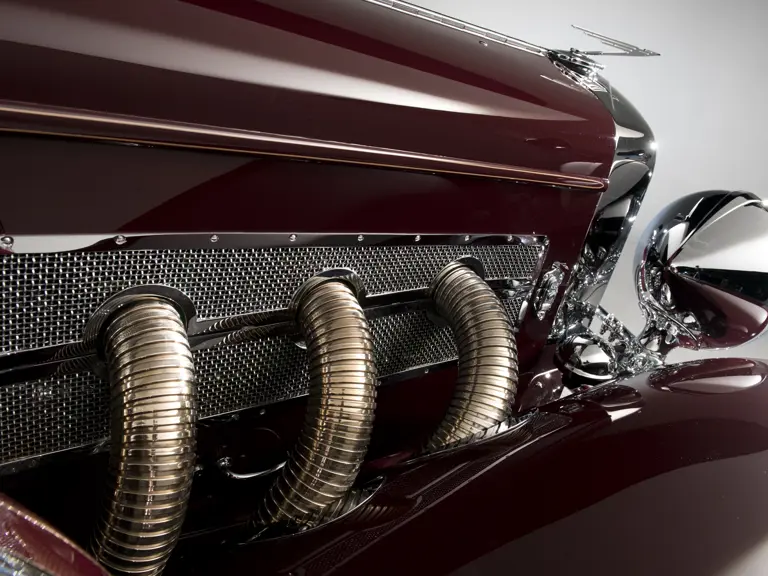

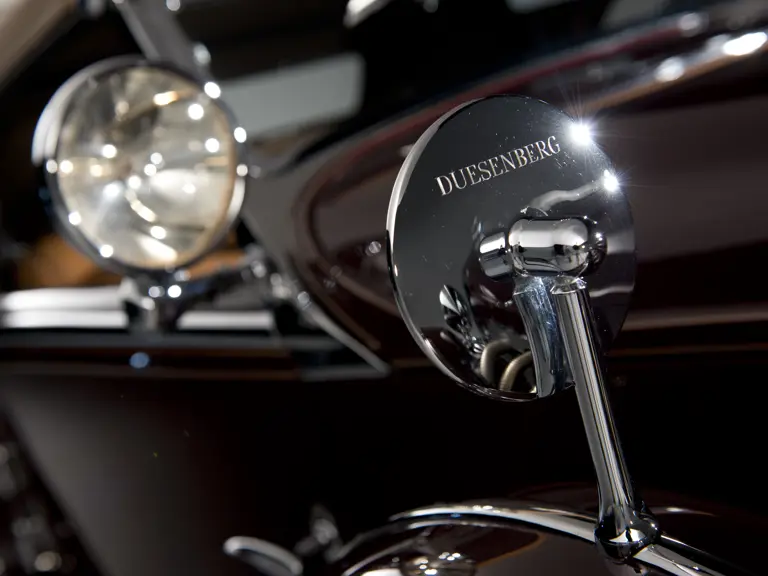
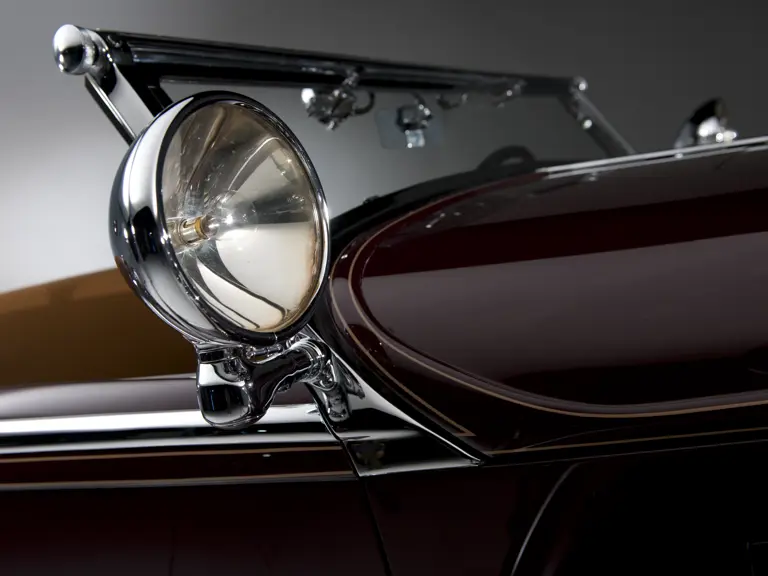

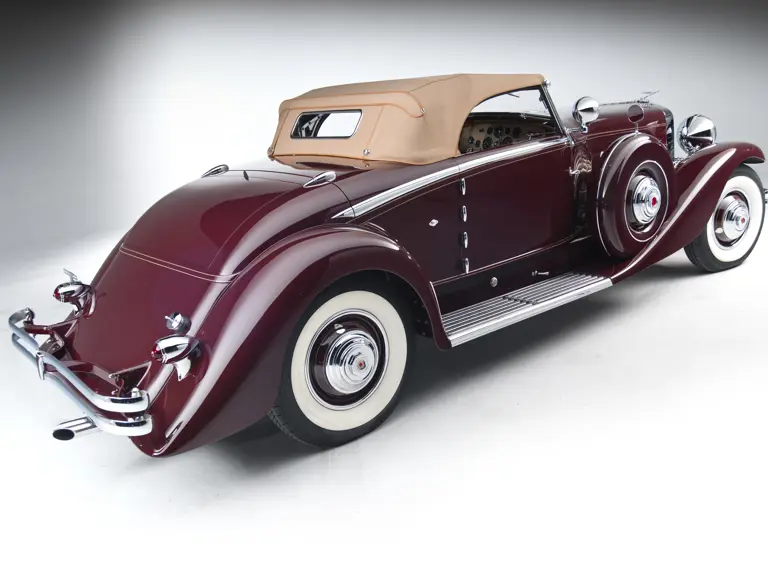
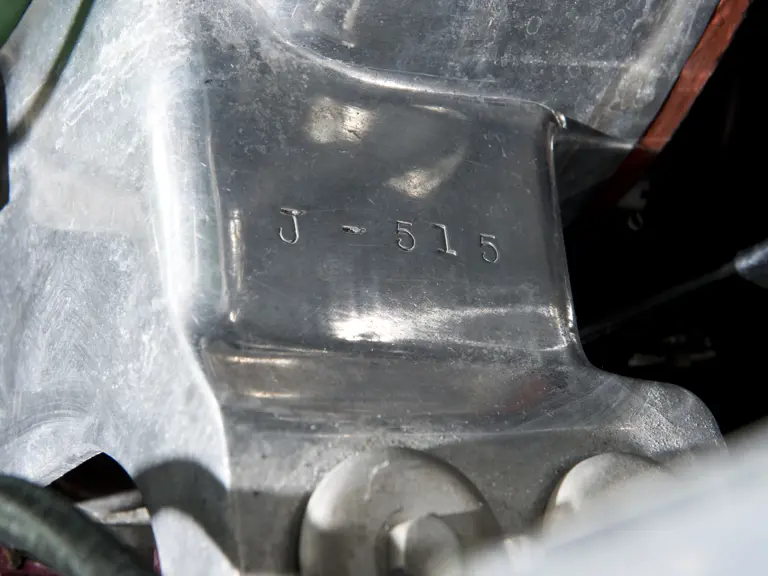

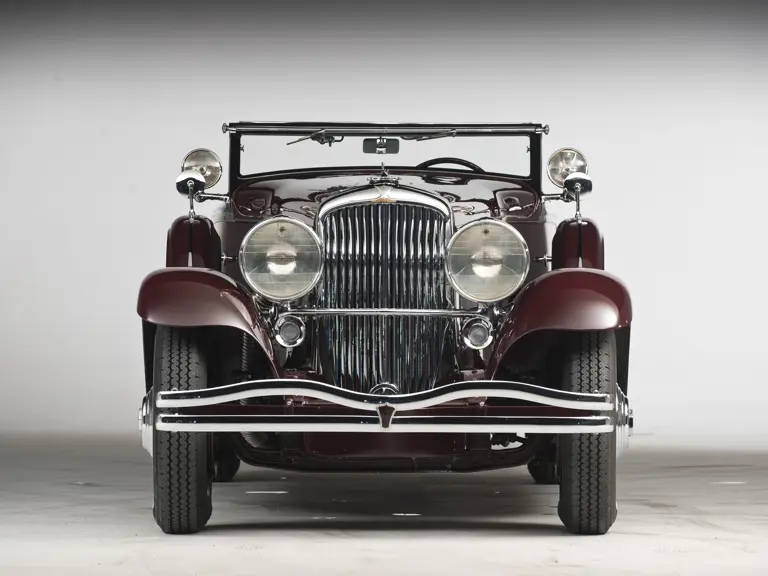
 | Amelia Island, Florida
| Amelia Island, Florida
